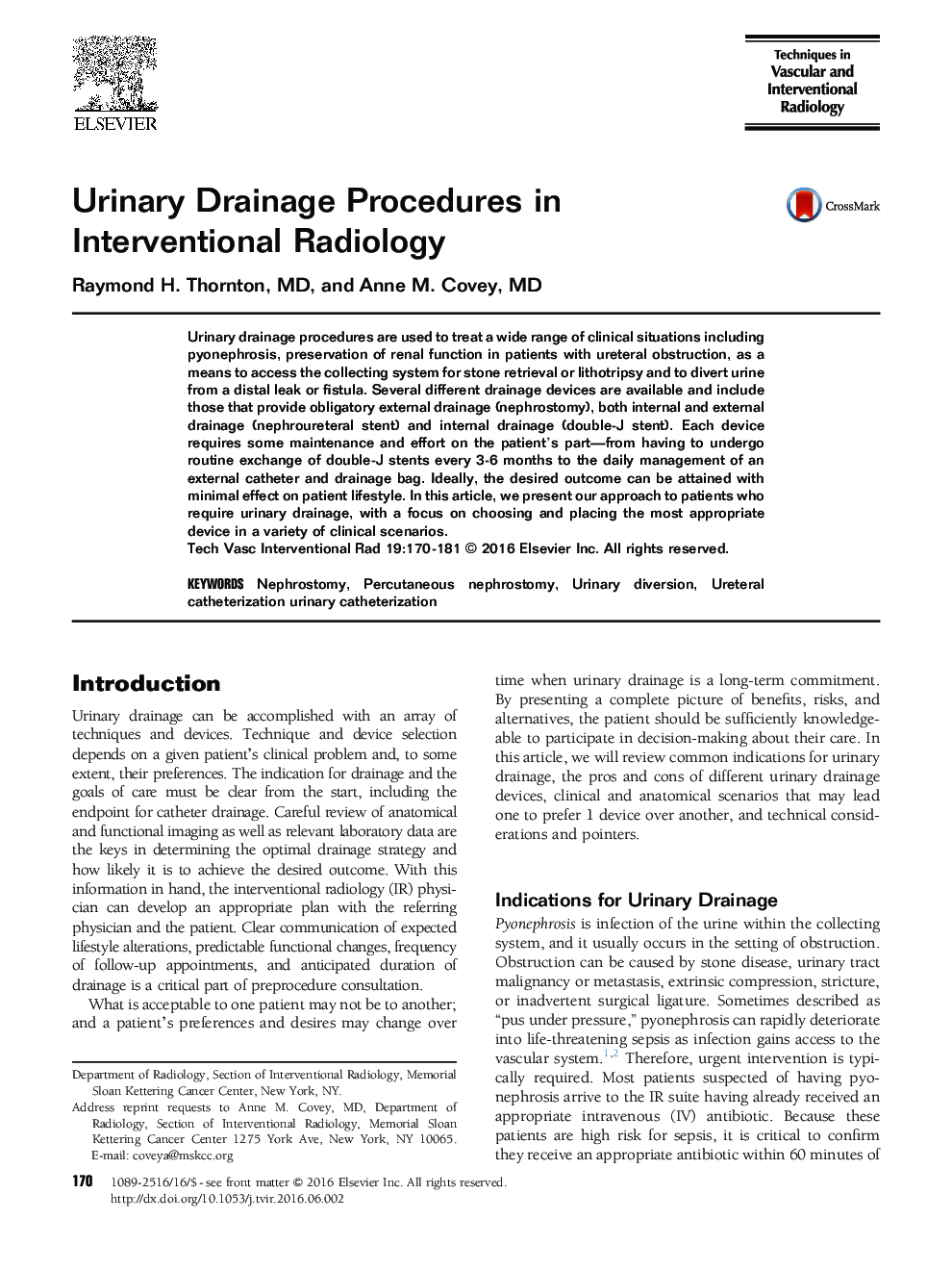| Article ID | Journal | Published Year | Pages | File Type |
|---|---|---|---|---|
| 4251478 | Techniques in Vascular and Interventional Radiology | 2016 | 12 Pages |
Urinary drainage procedures are used to treat a wide range of clinical situations including pyonephrosis, preservation of renal function in patients with ureteral obstruction, as a means to access the collecting system for stone retrieval or lithotripsy and to divert urine from a distal leak or fistula. Several different drainage devices are available and include those that provide obligatory external drainage (nephrostomy), both internal and external drainage (nephroureteral stent) and internal drainage (double-J stent). Each device requires some maintenance and effort on the patientʼs part—from having to undergo routine exchange of double-J stents every 3-6 months to the daily management of an external catheter and drainage bag. Ideally, the desired outcome can be attained with minimal effect on patient lifestyle. In this article, we present our approach to patients who require urinary drainage, with a focus on choosing and placing the most appropriate device in a variety of clinical scenarios.
